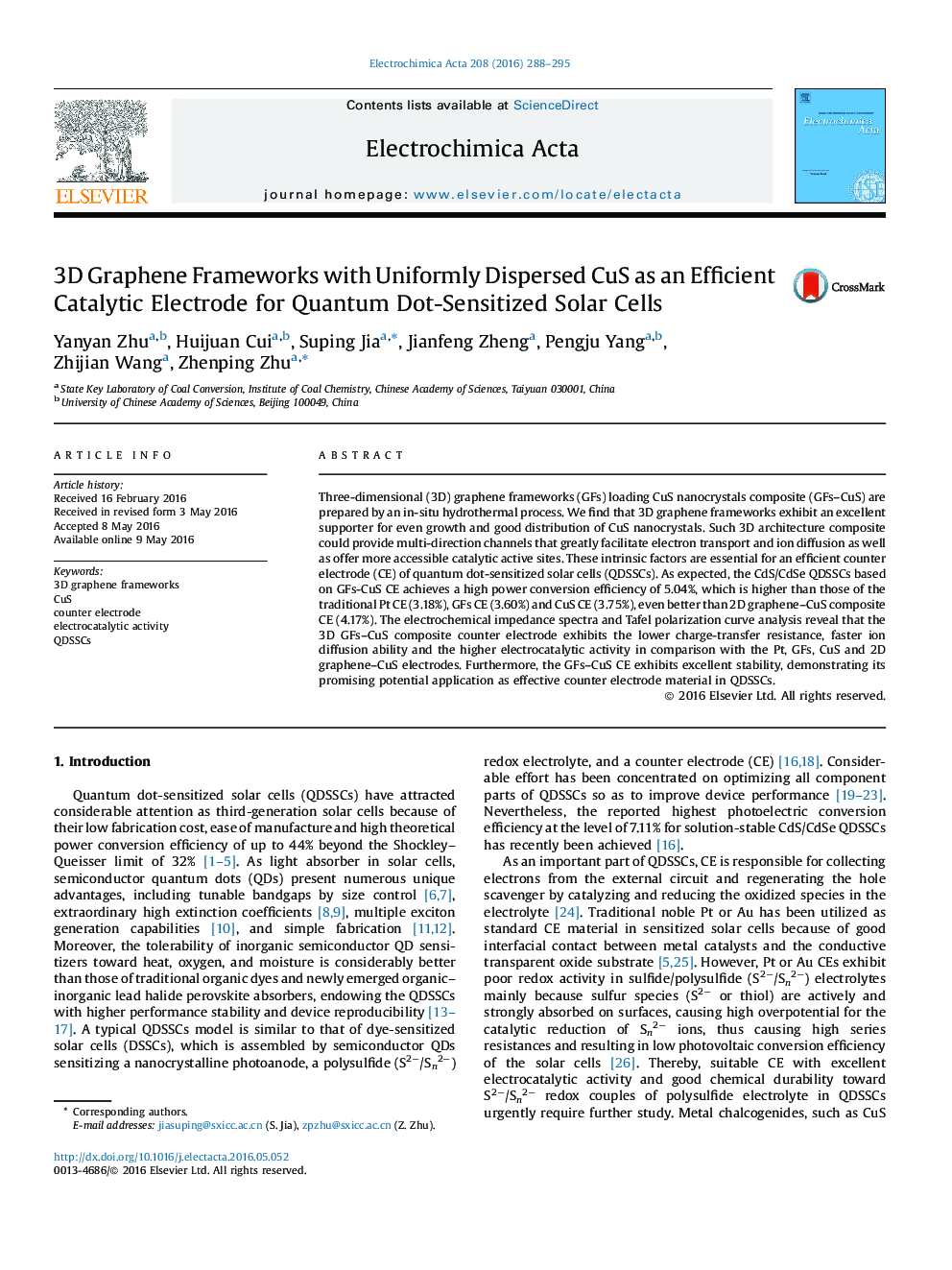| Article ID | Journal | Published Year | Pages | File Type |
|---|---|---|---|---|
| 182946 | Electrochimica Acta | 2016 | 8 Pages |
•First investigation of 3D GFs supported CuS nanocrystals as a CE in QDSSCs.•GFs–CuS exhibits superior electrocatalytic activity in polysulfide electrolyte.•The QDSSCs based on GFs–CuS CE achieves a high photoelectric efficiency of 5.04%.
Three-dimensional (3D) graphene frameworks (GFs) loading CuS nanocrystals composite (GFs–CuS) are prepared by an in-situ hydrothermal process. We find that 3D graphene frameworks exhibit an excellent supporter for even growth and good distribution of CuS nanocrystals. Such 3D architecture composite could provide multi-direction channels that greatly facilitate electron transport and ion diffusion as well as offer more accessible catalytic active sites. These intrinsic factors are essential for an efficient counter electrode (CE) of quantum dot-sensitized solar cells (QDSSCs). As expected, the CdS/CdSe QDSSCs based on GFs-CuS CE achieves a high power conversion efficiency of 5.04%, which is higher than those of the traditional Pt CE (3.18%), GFs CE (3.60%) and CuS CE (3.75%), even better than 2D graphene–CuS composite CE (4.17%). The electrochemical impedance spectra and Tafel polarization curve analysis reveal that the 3D GFs–CuS composite counter electrode exhibits the lower charge-transfer resistance, faster ion diffusion ability and the higher electrocatalytic activity in comparison with the Pt, GFs, CuS and 2D graphene–CuS electrodes. Furthermore, the GFs–CuS CE exhibits excellent stability, demonstrating its promising potential application as effective counter electrode material in QDSSCs.
Graphical abstract3D graphene frameworks supported copper sulfide nanocrystals could act as an efficient strategy to enhance the catalytic activity of counter electrode and achieve a high power conversion efficiency of 5.04% for quantum dot-sensitized solar cells.Figure optionsDownload full-size imageDownload as PowerPoint slide
